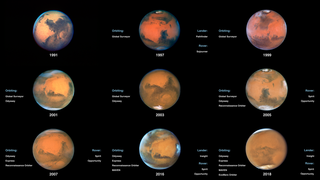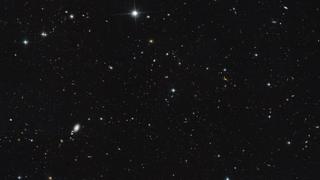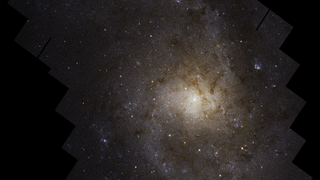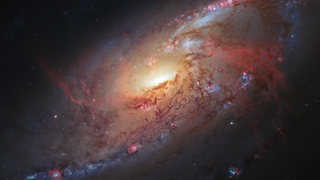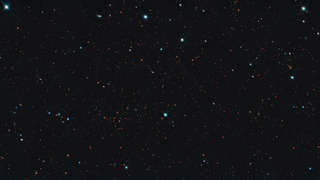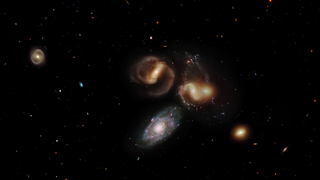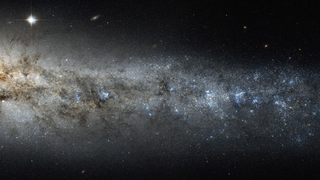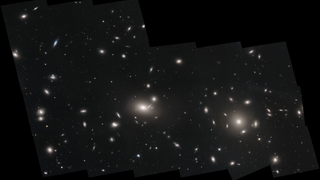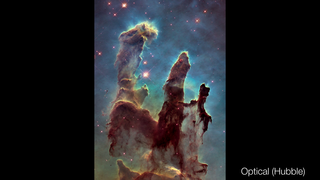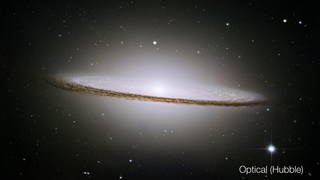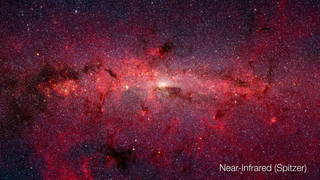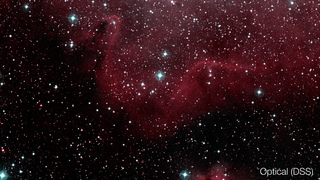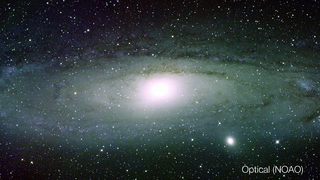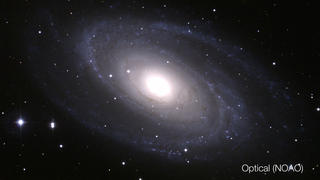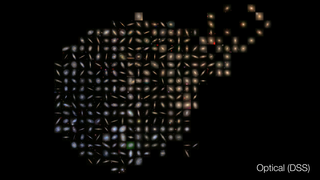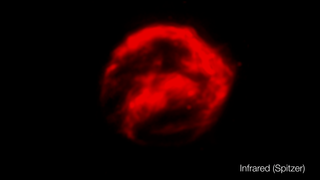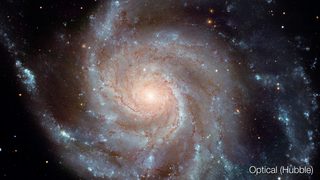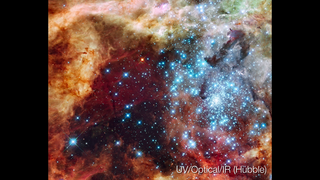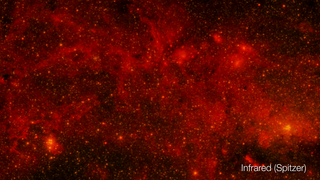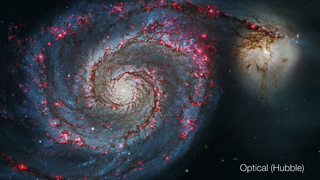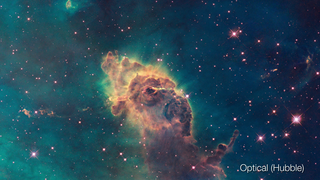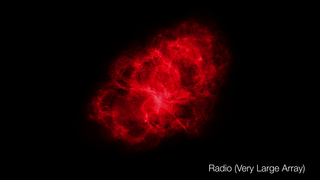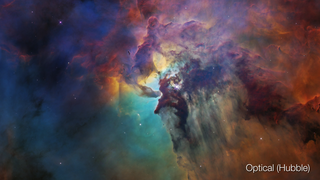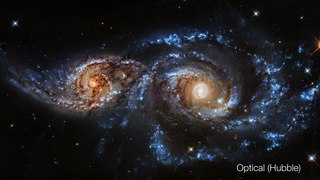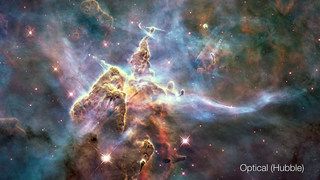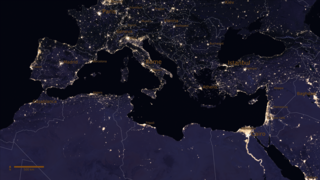Universe
ID: 30980
In NGC 253, the visible-light view is complicated by the viewing angle, dark dust clouds, and scatterings of massive stars. Switching to the near-infrared lets us see the full population of stars more clearly, revealing a bar running through the center of the galaxy. Including mid-infrared also brings out the dust lanes clearly, and even highlights the areas where stars are forming vigorously, particularly in the galaxy's center.
Optical: Dust and bright stars confuse the view in visible light.
Near-Infrared: Dust lanes along the spiral arms glow in the mid-infrared.
Mid-Infrared: The base population of stars reveal the spiral arms and central bar.
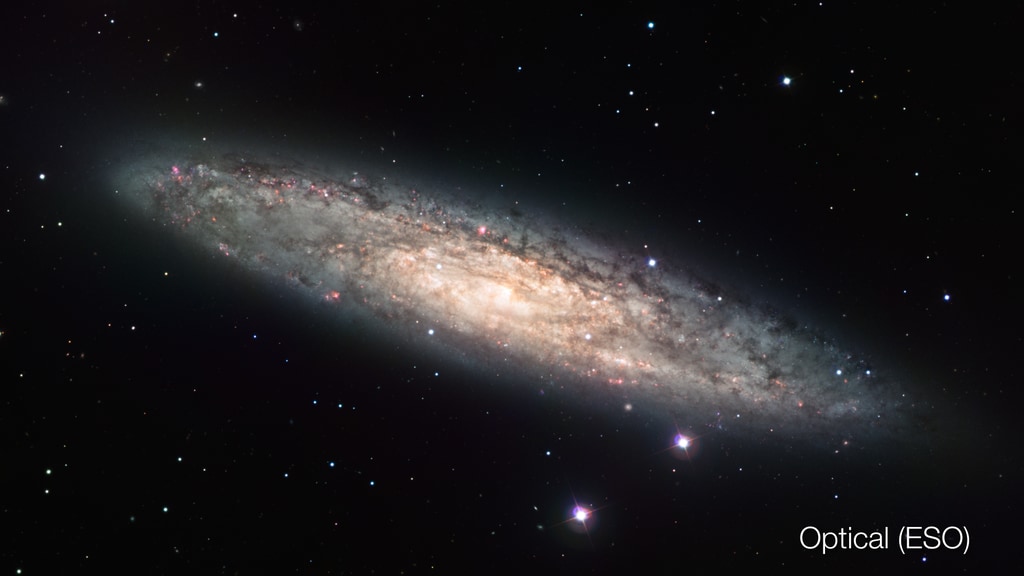
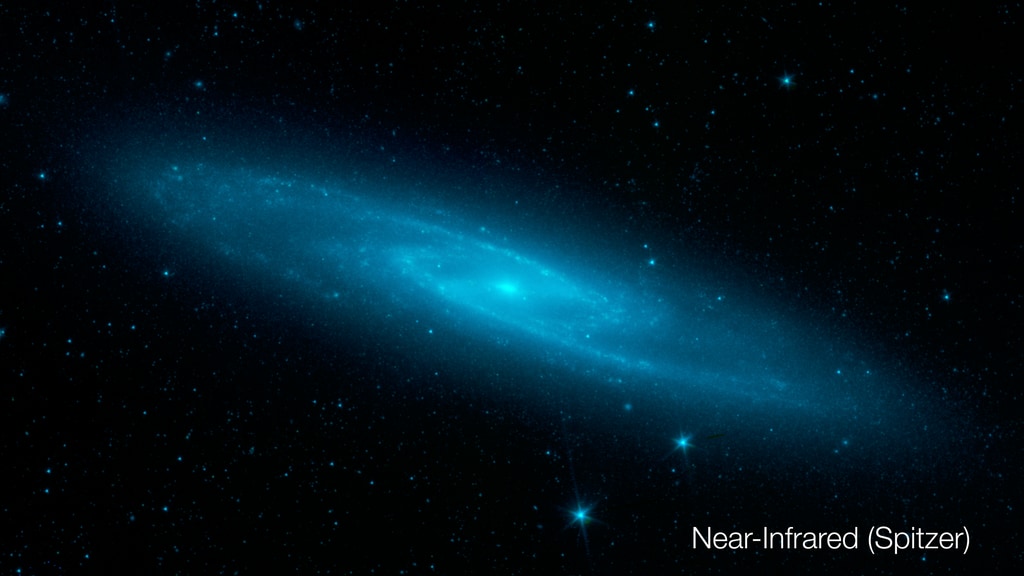
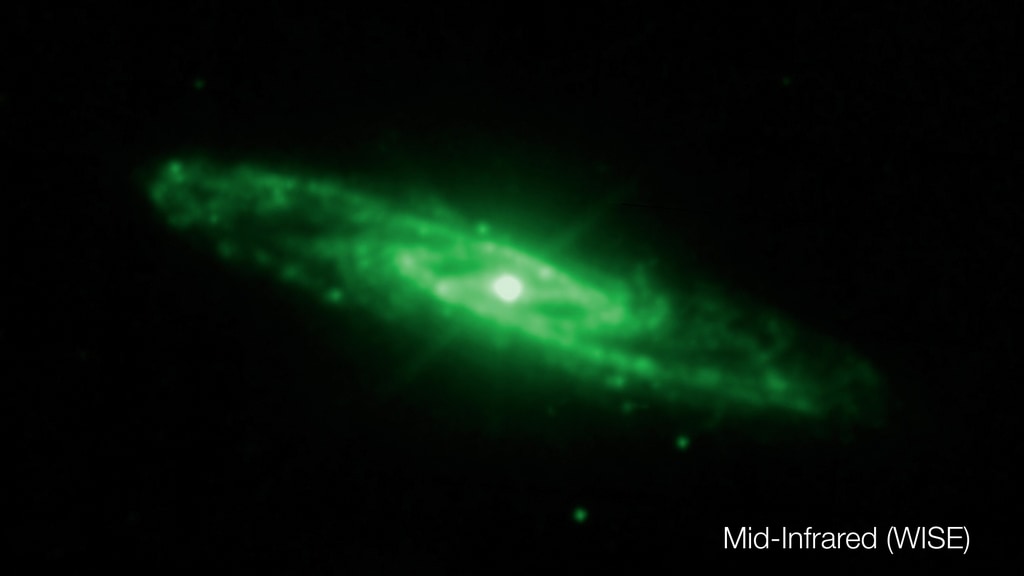
Barred Galaxy (NGC 253) in Multiple Wavelengths
Optical: Dust and bright stars confuse the view in visible light.
Near-Infrared: Dust lanes along the spiral arms glow in the mid-infrared.
Mid-Infrared: The base population of stars reveal the spiral arms and central bar.



Related
Credits
Greg Bacon (STScI): Visualizer
Leann Johnson (Global Science and Technology, Inc.): Technical Support
Leann Johnson (Global Science and Technology, Inc.): Technical Support
Please give credit for this item to:
Video: NASA, ESA, and G. Bacon (STScI)
Image Credits:
Video: NASA, ESA, and G. Bacon (STScI)
Image Credits:
- Optical: ESO
- Near-infrared: NASA, JPL-Caltech, UCLA
- Mid-infrared: NASA, JPL-Caltech, UCLA
Short URL to share this page:
https://svs.gsfc.nasa.gov/30980
Missions:
Spitzer Space Telescope
Wide-field Infrared Survey Explorer (WISE)
Data Used:
Note: While we identify the data sets used in these visualizations, we do not store any further details nor the data sets themselves on our site.
Keywords:
SVS >> Dust
SVS >> Galaxy
SVS >> HDTV
SVS >> Infrared
SVS >> Hyperwall
SVS >> Star
NASA Science >> Universe
https://svs.gsfc.nasa.gov/30980
Missions:
Spitzer Space Telescope
Wide-field Infrared Survey Explorer (WISE)
Data Used:
Spitzer Space Telescope
NASA JPL/Cal TechEuropean Southern Observatory (ESO)
Wide-field Infrared Survey Explorer also referred to as: WISE
Observed DataKeywords:
SVS >> Dust
SVS >> Galaxy
SVS >> HDTV
SVS >> Infrared
SVS >> Hyperwall
SVS >> Star
NASA Science >> Universe
